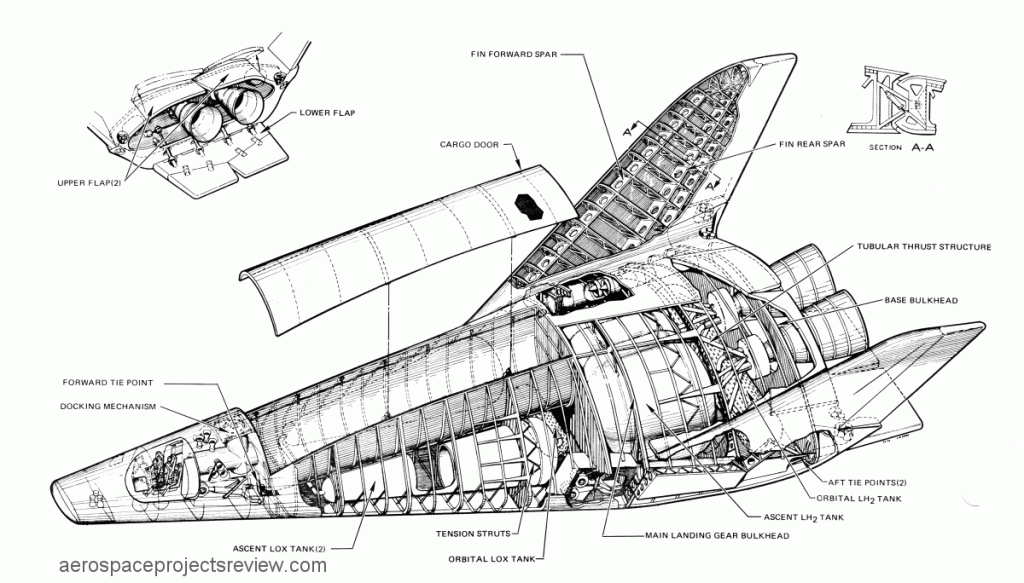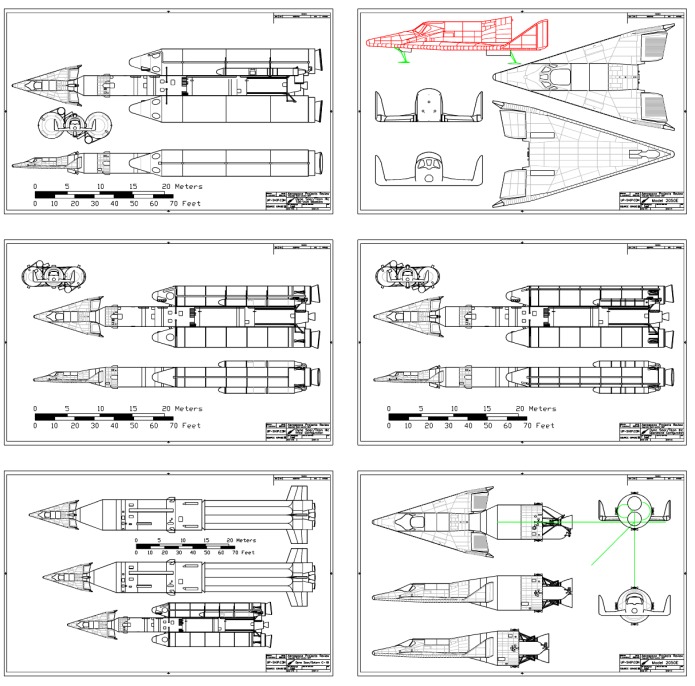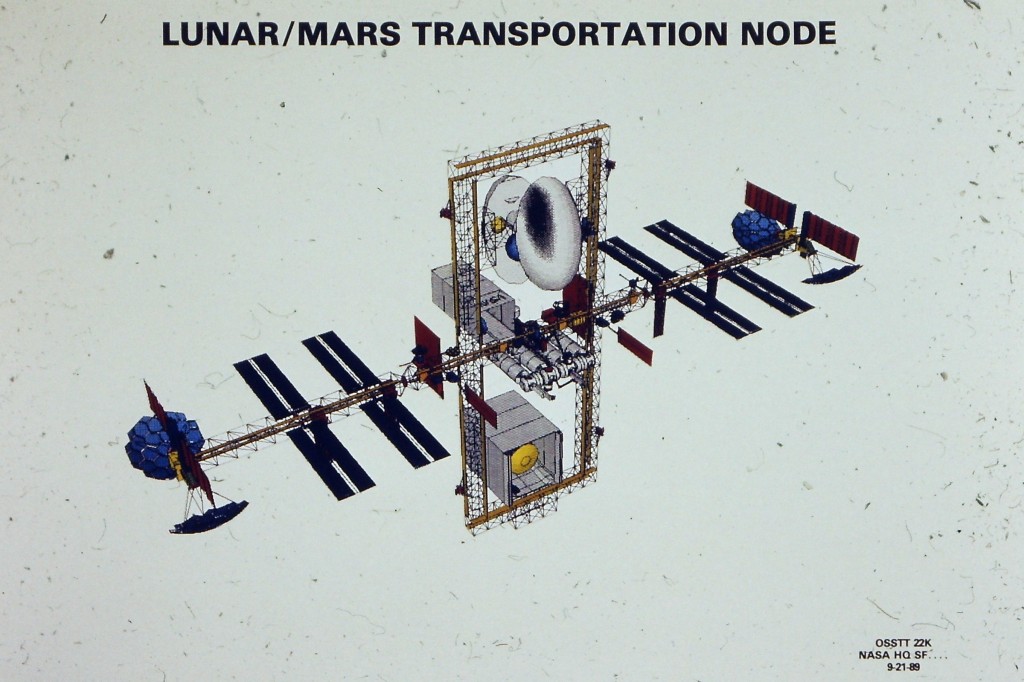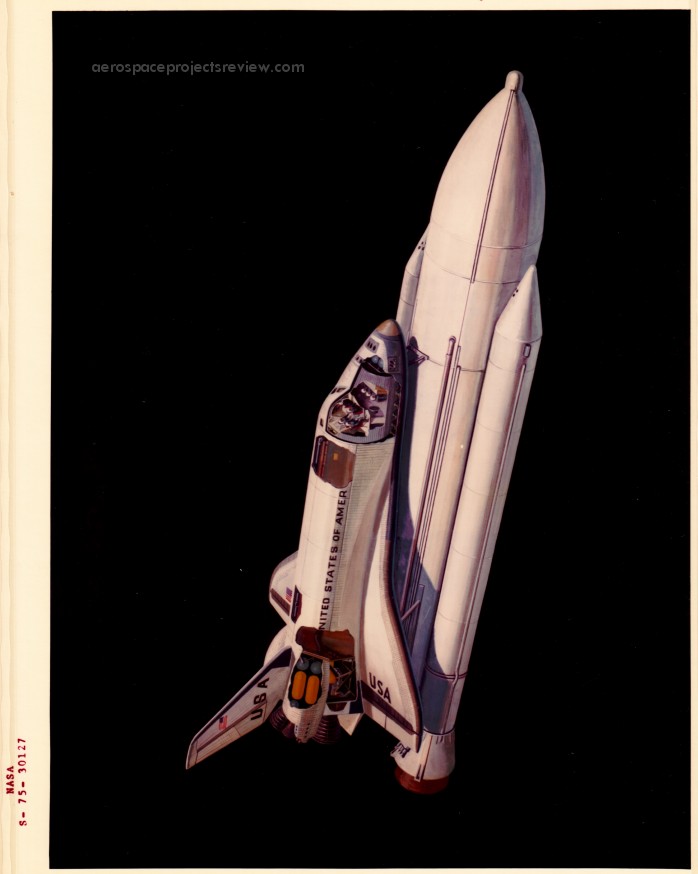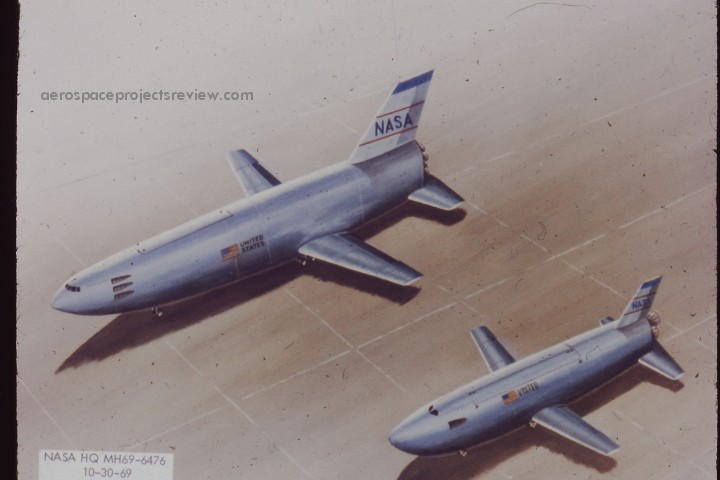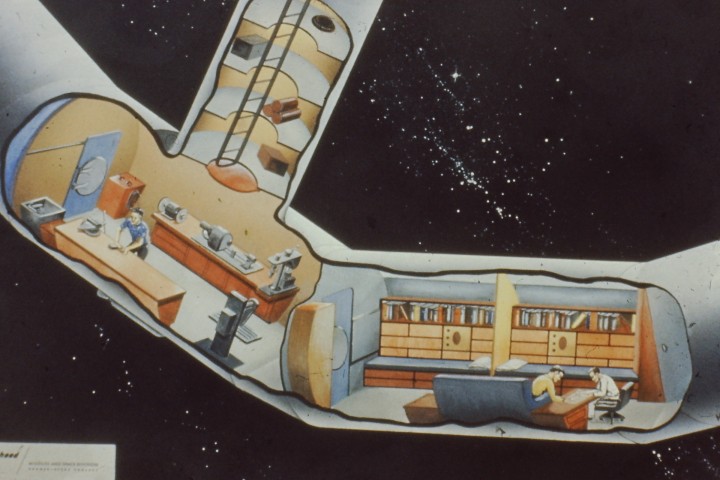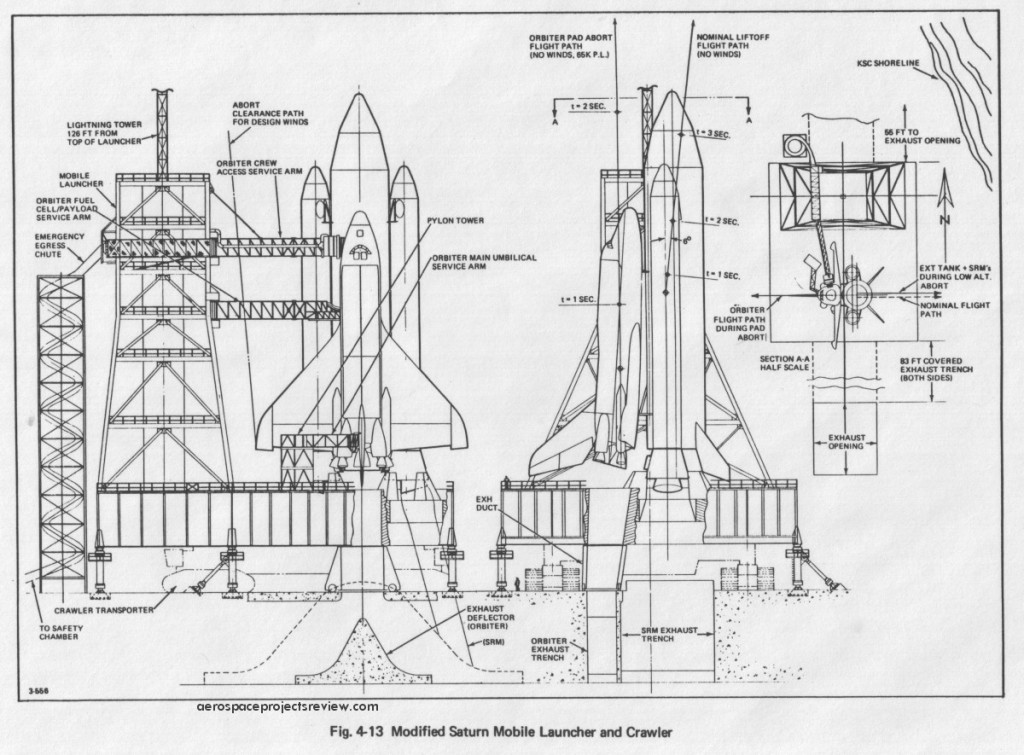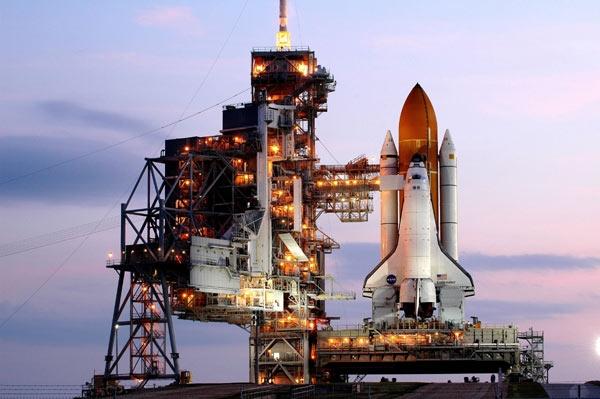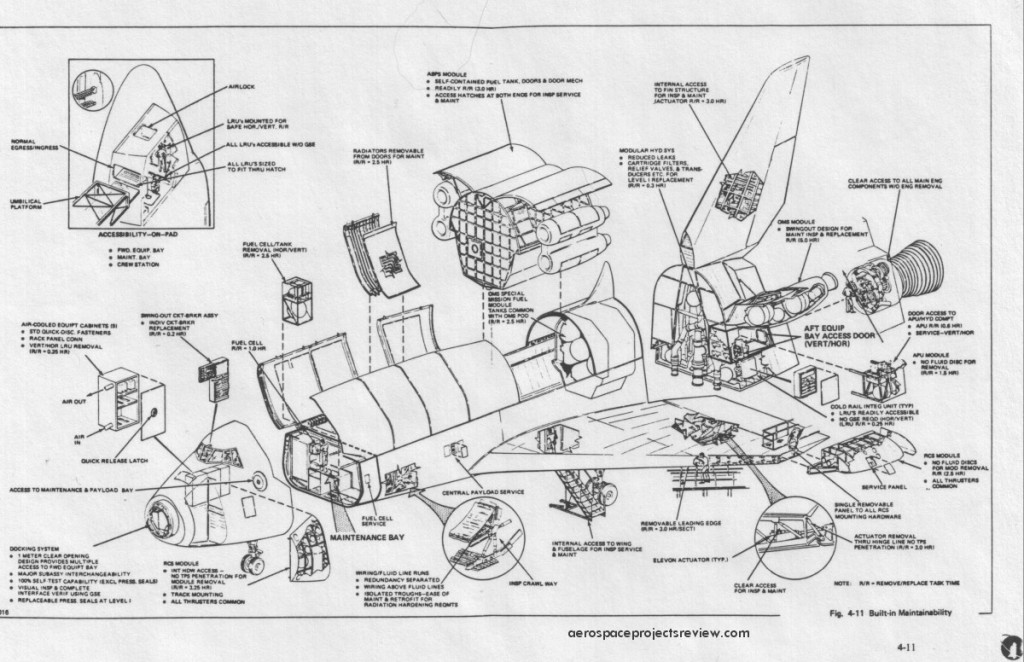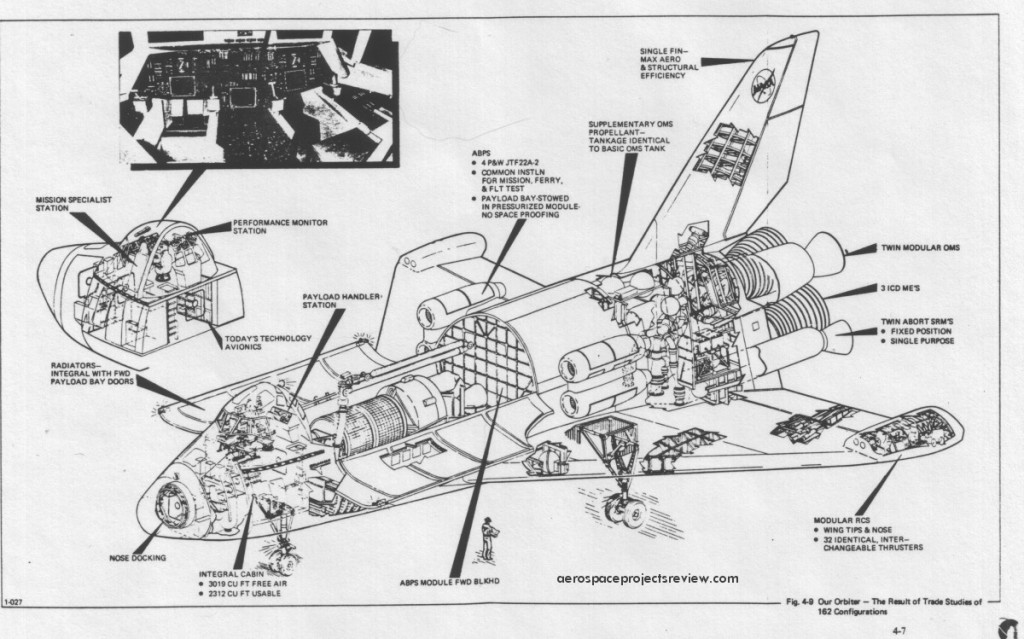An early 1970’s Lockheed concept for a fully reusable shuttle. Shown here is the orbiter, derived from the earlier STAR Clipper concept… but bigger and without the V-tank. The system used a reusable flyback booster for the first stage. Far more information is available on this and related concepts in Aerospace Projects Review issue V3N2 and V3N2 Addendum, available HERE.
The complete rework of APR from the original release a decade ago is going a lot slower than I’d planned. A lot of people have asked for the original versions of the as-yet-unreleased issues of APR to be made available. I’ve been hesitant to do so, but… it’s just taking too long. So, I’ve taken the original Word files for the six issues of Volume 4 and the six issues of Volume 5, and made two PDF files from them. I’m making them temporarily available as two bulk sets. When the issues are re-released, these full-volume sets will be withdrawn. So, Volume 5 might remain available till the sun explodes, I dunno…
If you’re dying to get hold of the old-school APRs, here’s your chance. Remember, these are the *original* files from around 2002-2004, without any updates, edits or other changes. Errors, crappy formatting and all. A bunch of the individual old articles remain available as well.
APR Original Run Volume 4 downloadable PDF: $30
———
APR Original Run Volume 5 downloadable PDF: $30
———
Here are the contents:
Volume 4:
The X-15 Research Airplane Competition: The Bell Aircraft Proposal by Dennis R. Jenkins
First in a series of articles describing the competitors for the X-15
Lockheed Model L-153 Part 2 by Bill Slayton
Immediately post-war M-wing jet fighter designs
Cobras Of The Field by Scott Lowther
Modified helicopters for ag duty
Lockheed Model L-153 Part 3 by Bill Slayton
Immediately post-war swept-wing jet fighter designs
The X-15 Research Airplane Competition: The Douglas Aircraft Proposal by Dennis R. Jenkins
The Douglas competitor for the X-15
The Martin “Spacemaster” by Scott Lowther
An unconventional design competitor for the Shuttle
Radial Engine P-51 Mustang by Scott Lowther
A little-known modification to the supreme WWII fighter
The X-15 Research Airplane Competition: The Republic Aviation Proposal by Dennis R. Jenkins
The Republic competitor for the X-15
Boeing Super Clippers, then and Now by Scott Lowther
Truly grand aircraft
The X-15 Research Airplane Competition: The North American Proposal by Dennis R. Jenkins
The winning competitor for the X-15
The HFB 530 Ranger by Mike Hirschberg A German VTOL strike/recon design
Lockheed Model L-153 Part 4 by Bill Slayton
Early Post-war variable geometry fighters
Sonic Cruiser Update by Scott Lowther
New drawings of a new aircraft
LARA Craft: COIN Raiders by Scott Lowther
A long way to go for a bad pun for some tough aircraft
English MUSTARD by Scott Lowther
An early 1960’s British fully reusable Space Shuttle
The NACA’s First Jet by Scott Lowther
The last gasp for ducted fans prior to the turbojet
Addendum to Issue V4N5
Ooops.
The Hopeless Diamond by Scott Lowther
The first cut of the stealth fighter
Sea Dragon by Scott Lowther
A giant, dirt-cheap launch vehicle
North American NA-116 by Scott Lowther
A long-range bomber
Multibody Designs From Lockheed by Scott Lowther
Unconventional yet fuel efficient designs
————————–
Volume 5:
Editor’s Gratuitous Additions: Republic XF-103
A little bit of extra info.
Republic XF-103 by Dennis R. Jenkins
About as sleek as an aircraft can get.
Boeing’s Advanced Multipurpose Large Launch Vehicle by Scott Lowther
Perhaps the most powerful space launcher ever seriously conceived.
McDonnell Douglas GRM-29A by Scott Lowther
Just about the coolest spaceplane ever… but would it have worked???
The Rockwell XFV-12A V/STOL Prototype by Dana E. Lubich
It came close…
XFV-12A Followons by Scott Lowther
The end of the program wasn’t the end of the concept
Hawker Siddeley HS 141 by Scott Lowther
VTOL jetliner concept
Bell/Boeing Armed XV-15 by Scott Lowther
A tilt rotor with a mission
Lockheed Sea Sitter by Scott Lowther
A seaplane to conquer the oceans
Early Atlas Missile Designs by Scott Lowther
Evolution of America’s first ICBM
Boeing’s Air-Launched Micro-Fighters by Scott Lowther
The fighter needed for a flying aircraft carrier
Chrysler SERV by Scott Lowther
An SSTO Space Shuttle design
Soviet Seaplane Jet Bombers by Thomas Mueller and Jens Baganz
A counterpoint to American efforts
4,000 Ton Orion by Scott Lowther
Recently declassified data on a large nuclear pulse propulsion craft
Mart Model 262 by Scott Lowther
A mysteriously delayed article on VTOL fighters…
NASA Langley High Speed Civil Transport by Scott Lowther
Mach 3 and Mach 4 transports from the late 1980’s
Convair/Canadair Tilt-Wing Close Support Aircraft by Scott Lowther
VTOL gunship
Spacejet by Scott Lowther
Spaceplanes with dropable jet engines
Handley Page All-Wing Airbus by Scott Lowther
A British flying-wing transport from the 1960’s
Convair NX-2 Nuclear Powered Bomber by Scott Lowther
A well known but – until now – poorly documented nuclear powered aircraft project
Technology Needs for High Speed Rotorcraft Part 1 Sikorsky and Bell by Scott Lowther
Tiltrotos, tiltwings, fan-in-body designs
Lockheed-Martin ICE by Scott Lowther
An experimental tailless stealth fighter design
Raumwaffe, 1946
Boeing WS-110A
X-Wings
Dash-On-Warning
A long way from being complete. But here’s a look at diagrams being prepared for the article on the Model 2050E X-20 Dyna Soar. This will include not only the proposed operational versions, including bomber, shuttle, rescue, interceptor and so on, but also alternate launch vehicles. Since there has never been a really good layout diagram of the ultimate X-20 on the Titan III released, I’ve created one. Two, actually… the X-20 with just the transtage atop the Titan IIIc with the early UA-1205 boosters, and an operational Dyna Soar with external separation motors, cargo section and later UA-1205 motors. Additionally, Titan III with 156-inch boosters and Saturn C-IB concepts proposed by Boeing.
One of the original selling points of the Space Station was that it would be useful as an assembly station and launch point for manned missions to the Moon and Mars. One such concept was the one illustrated below, a “dual keel” station concept from 1989 with a partially enclosed “hangar” below and an aeroshell-equipped Mars vehicle above.
This space station design features a wealth of electrical power, both from rectangular photovoltaic arrays and segmented-mirror solar dynamic generators.
NASA art, circa 1975, depicting the Space Transportation System. Apart from the paint job, this is pretty much as-flown, except for the fairing over the nose of the ET. This probably depicts the “de-orbit” solid rocket motor that early ET concepts showed, meant to make sure that the ET was properly dumped into the Indian Ocean.
A NASA painting of a 1969-vintage Space Shuttle concept. This was known as the “DC-3” configuration, and was designed – or at least heavily pushed – by Maxime Faget, and was adopted by several McDonnell-Douglas designs. It featured two manned and reusable rocket powered stages, both burning hydrogen & oxygen, both with straight wings. The smaller orbiter would basically “belly flop” into the atmosphere when re-entering. The straight wings would not provide a whole lot of lift, but they would also not be very massive. Thus the vehicles were relatively lightweight, but with restricted crossrange. Both stages also had turbofan engines mounted in the nose for cruise and landing assist.
A closeup of part of the “wheel” of the early-60’s Lockheed space station concept. Via NASA history office.
A number of early rotating space stations used “wheels” like this, with straight cylindrical segments forming a torus. While this would be relatively easy to build, it would have the result that the flat floors would be “curved” from the standpoint of “gravity.” Things would roll “downhill” towards the joints between segments.
Grummans concept for the mobile launch pad for their version of the Space Shuttle. It’s generally similar to the pad as actually built, but with some differences. The Shuttle is offset on the pad, rather than centrally located in order to provide room on the mobile pad for the tower, which for some reason was on the mobile pad rather than fixed in place.
Some of the design features of the Grumman Design 619. Compared to the Shuttle Orbiter as actually built, the most obvious difference is the inclusion of the air breathing propulsion system model that consumes about 1/3 of the payload bay. Also note the RCS modules on the wingtips, the outward-bowing payload handlers station, nose airlock and the solid abort rockets along the aft fuselage.
